The Grand Canyon stands as one of the most iconic and breathtaking national parks in the world, drawing adventurers and nature lovers eager to witness its grandeur. For those planning a day hike and seeking practical, beginner-friendly advice, it’s crucial to understand the unique challenges and opportunities this majestic landscape offers. This comprehensive guide shares essential tips and insights for day hiking in the Grand Canyon, focusing primarily on the South Rim—where most first-time visitors start their journey. Whether you dream of a scenic stroll along the rim or a more ambitious hike down into the canyon, these expert recommendations will help you prepare safely and enjoy your adventure to the fullest.
For travelers staying near Southern Utah’s premier vacation rentals, including those available at Stay Copper Rock, the Grand Canyon offers an unforgettable day trip or multi-day excursion. This guide will also weave in practical advice for maximizing your visit while staying comfortably nearby.
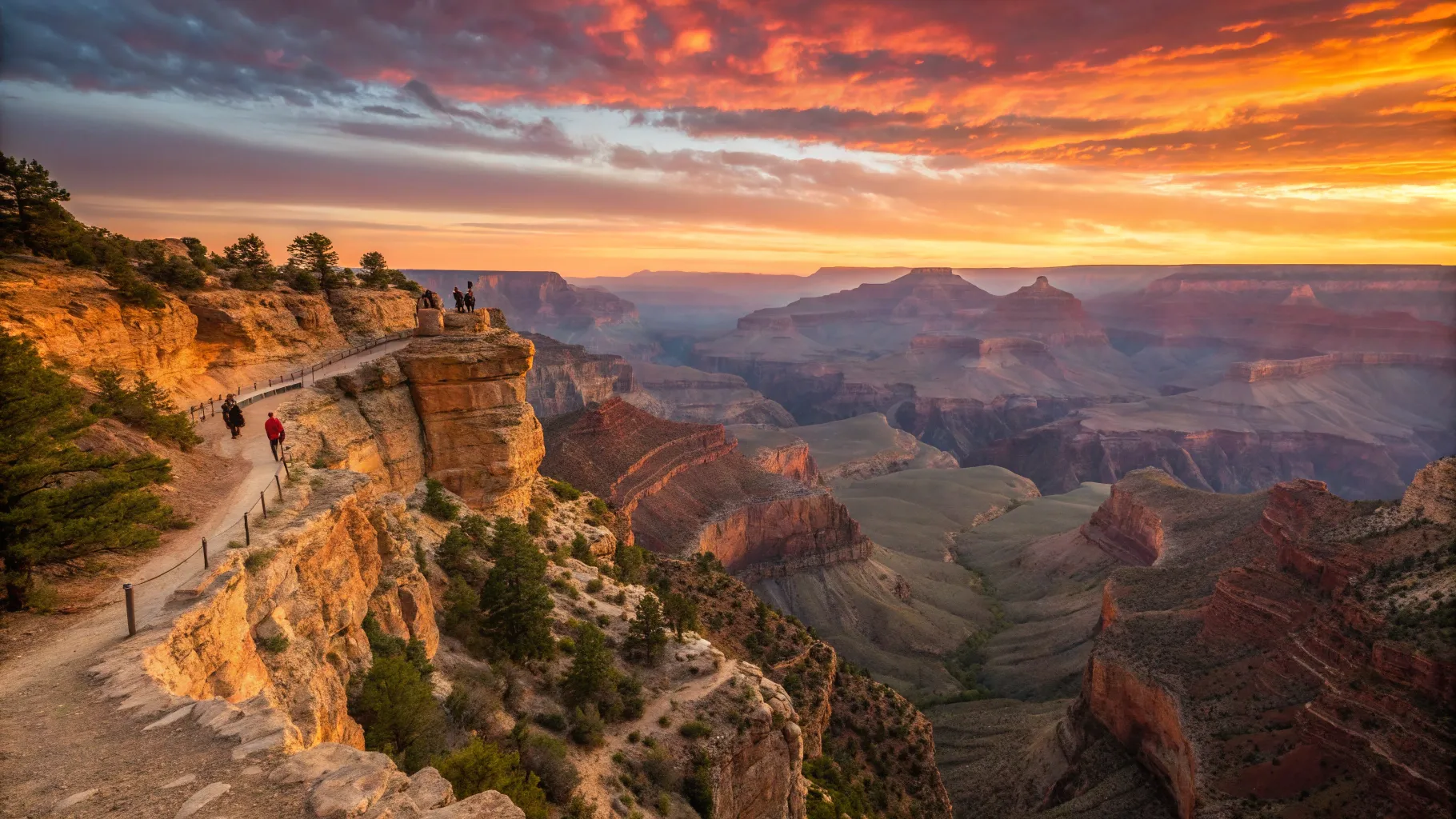
Understanding the Grand Canyon’s Layout: South Rim vs. North Rim
One of the first things to grasp about the Grand Canyon is that it essentially functions as two distinct parks: the South Rim and the North Rim. Although separated only by the canyon itself, these rims are geographically and logistically different.
The South Rim is accessible year-round and serves as the hub for most visitors. It offers numerous day hiking trails, amenities, and lodging options. In contrast, the North Rim is more remote, closed during the winter months due to heavy snowfall, and requires a longer drive to reach. To put it in perspective, driving from the South Rim to the North Rim takes about four to five hours. Interestingly, it’s actually quicker to reach Zion National Park in Utah from the North Rim than it is to drive to the South Rim.
This separation means visitors should plan their trip with one rim in mind unless they are prepared for a long drive or an extended backcountry adventure. For most first-timers and day hikers, the South Rim provides the best access, infrastructure, and trail options.
Where to Stay for the Best Grand Canyon Hiking Experience
Choosing accommodation close to the trails can greatly enhance your visit. Staying within Grand Canyon Village inside the park places you right at the heart of the action. While lodging here can be more expensive and challenging to book, the convenience of being steps away from restaurants, shuttle buses, and trailheads is unmatched.
If booking inside the park isn’t feasible, consider staying in Tusayan, a small town just 10 minutes south of the park entrance. Tusayan offers a range of affordable hotels, dining options, and essential services, making it a practical base for day hikes. Early risers who leave before 6:00 AM can usually drive directly into the park, but later arrivals should be prepared for potential lines at the entrance.
For hikers lacking gear or those who prefer to travel light, the Grand Canyon Village marketplace features a general store where you can rent or purchase hiking and camping equipment, including trekking poles. This convenience ensures you can adapt your gear to the canyon’s demands without lugging heavy equipment on flights.
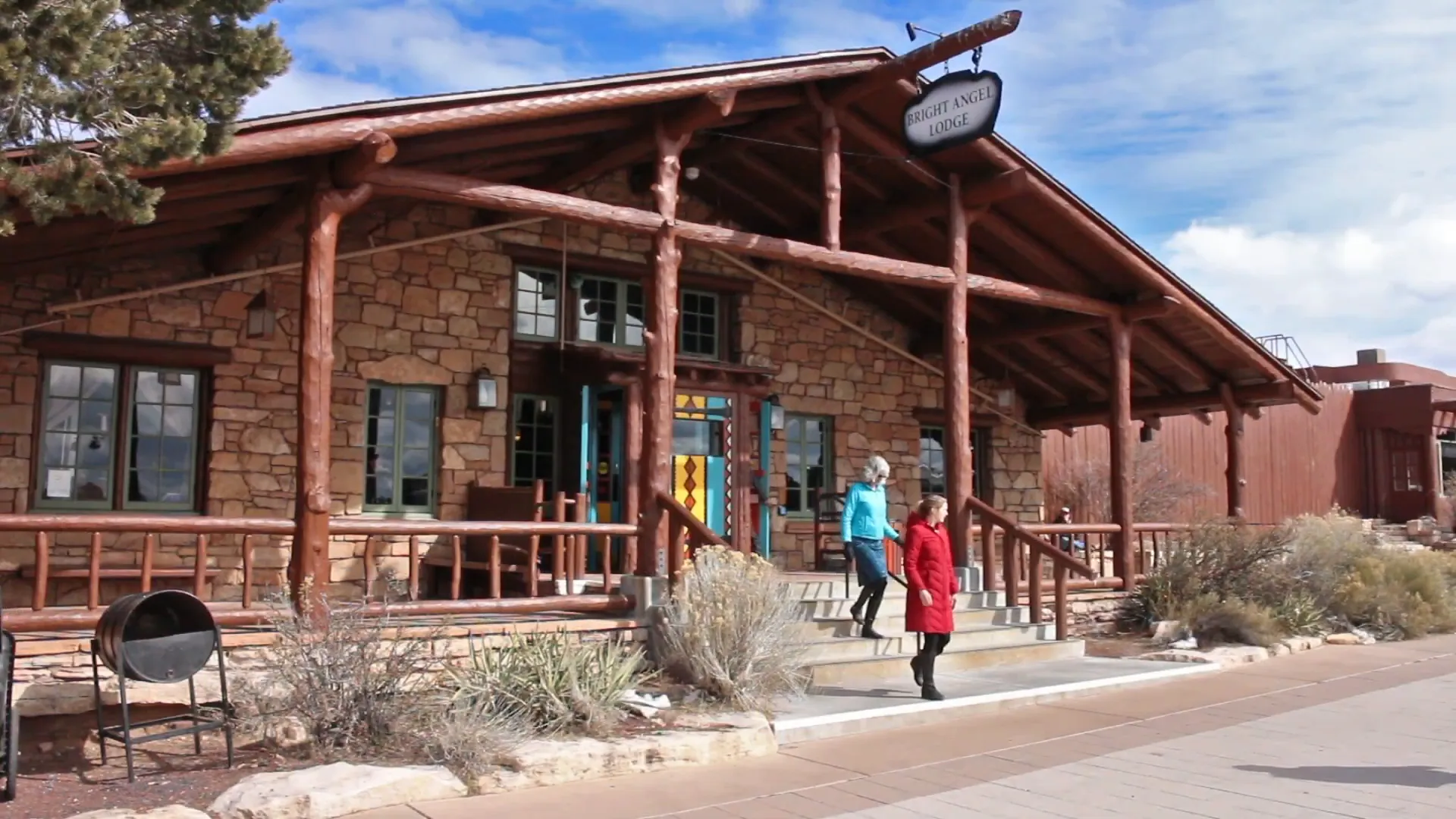
Weather Considerations: Preparing for the Unexpected
The Grand Canyon’s weather can be surprisingly variable, especially on the South Rim. While the landscape often looks like a dry desert, hikers should be ready for sudden snowstorms, blizzards, or thunderstorms, particularly in the winter and early spring months. For example, even in March, unexpected blizzards can occur, necessitating extra warm clothing and traction gear like crampons for icy trails.
Summer brings intense heat, especially at the canyon’s bottom. Temperatures at Phantom Ranch near the Colorado River can be 20 to 30 degrees Fahrenheit warmer than at the rim, creating a dramatic climate difference within a single hike. It’s not uncommon to start a hike in snowy conditions at the rim and reach the bottom in t-shirt weather.
Because of this variability, always check the weather forecast before your hike. Additionally, the National Park Service website provides updates on road closures or trail conditions, which can be critical during inclement weather.
Choosing the Right Trail for Your Day Hike
The South Rim offers several well-known trails suitable for day hikes, each with its own characteristics and difficulty level. Here’s a breakdown of the most popular options:
- Bright Angel Trail: This trail is the most recommended for beginners due to its moderate gradient (about 10%) and availability of water stations along the route. It stretches all the way to the Colorado River but hiking the full length is extremely challenging and not advised for casual day hikers. Instead, consider hiking down to Plateau Point (about 12 miles round trip), which offers stunning views of the river. Bright Angel is centrally located and serviced by shuttle buses, making it very accessible.
- South Kaibab Trail: Known for spectacular vistas, this trail is steeper and more exposed than Bright Angel, with no water sources along the way. It’s a shorter trailhead accessible only by shuttle bus. Day hikes here can range from 2 to 6 miles, depending on your stamina and goals.
- Grandview Trail: An old mining trail from the 1890s, Grandview is one of the toughest day hikes on the South Rim. It has a steep gradient (around 20%) and leads to Horseshoe Mesa, where you can explore an abandoned mine. This trail is best suited for experienced hikers seeking solitude and rugged terrain.
- Hermit Trail: Located on the west side of the South Rim, Hermit Trail is less crowded and more primitive. Shuttle buses provide access most of the year. It’s a challenging hike with fewer amenities and is ideal for hikers looking to get off the beaten path.
- Rim Trail: For those seeking an easy, flat hike, the Rim Trail stretches approximately 13 miles along the South Rim with minimal elevation changes. This trail offers breathtaking panoramic views without the strenuous climbs of trails descending into the canyon.
For detailed trail maps and itineraries, visitors can explore comprehensive resources such as Grand Canyon hiking guides, which provide everything from short, easy walks to more demanding descents.
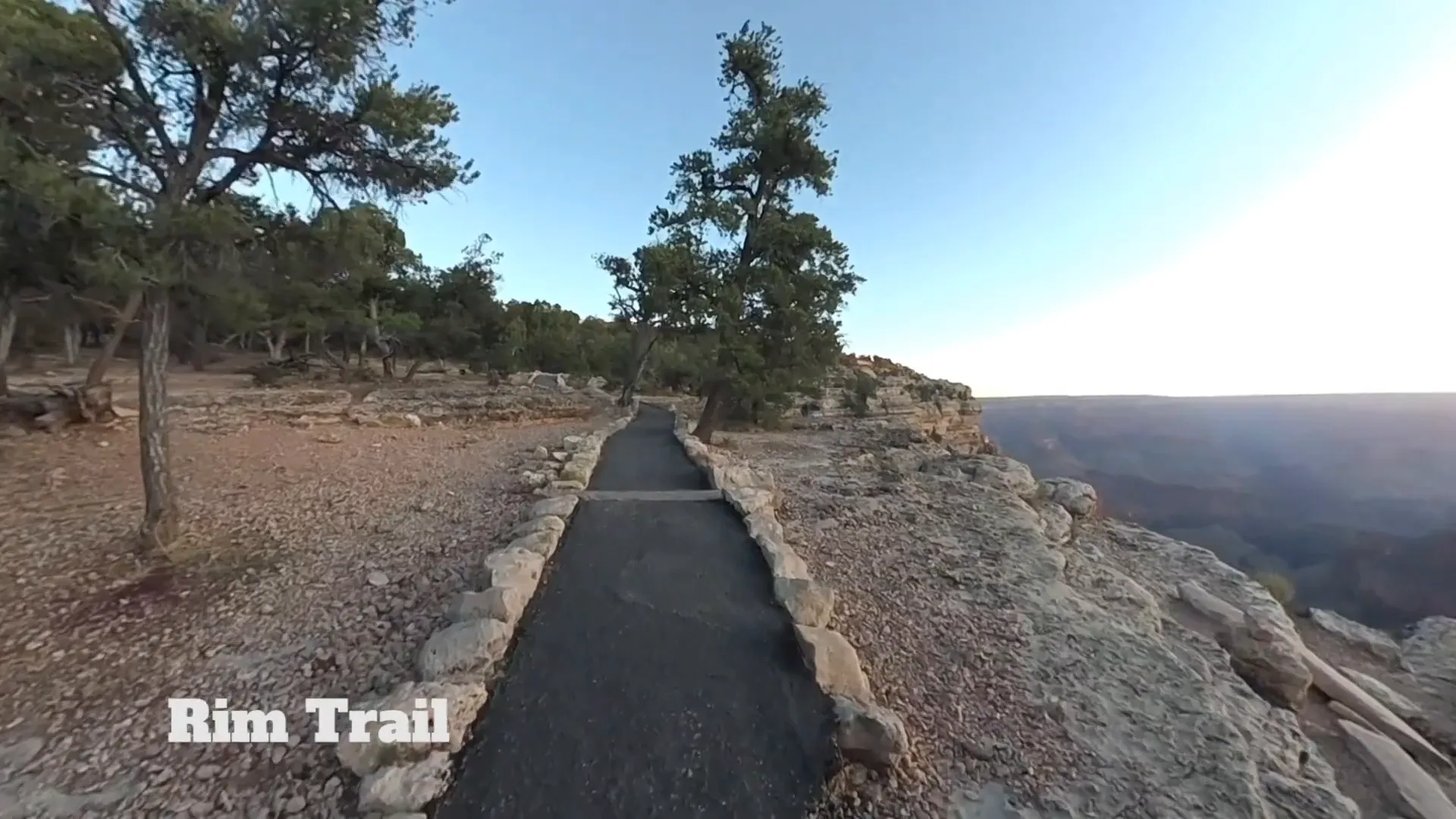
Planning Your Hike: Managing Distance, Elevation, and Pace
When planning a day hike into the canyon, keep in mind that descending is much easier than climbing back out. The uphill return can be grueling, especially on steeper trails like Grandview or Hermit Trail with gradients around 20%. Bright Angel’s more gradual 10% incline makes it more manageable for most hikers.
A realistic goal for most day hikers is to complete one hike into the canyon and back out. Attempting more than that in a single day is physically demanding and increases risk. A useful rule of thumb is to budget at least twice as much time for the ascent as for the descent. For example, if it takes 30 minutes to hike a mile down, expect about an hour to hike that same distance back up.
Proper pacing and preparation are key to avoiding exhaustion. Starting early, ideally at sunrise, helps hikers beat the crowds and mule trains and enjoy cooler temperatures.
Essential Gear and Supplies for Grand Canyon Day Hikes
Water is the most critical supply for any Grand Canyon hike. Many trails do not have water sources, so carrying ample water is non-negotiable. A hydration pack with at least three liters of water is recommended. Even on trails like Bright Angel, where water is available at intervals, it’s wise to bring extra water in case of pipeline issues or closures.
Snack wisely to maintain energy. Heat and exertion can make solid foods difficult to digest, so consider energy gels commonly used by runners or squeezable fruit purees like baby food packets. These provide quick energy without upsetting the stomach.
Trekking poles are highly beneficial, especially on steeper or more rugged trails such as Grandview or Hermit Trail. They help with balance and reduce strain on knees during both ascent and descent.
Remember that mule trains operate on Bright Angel and South Kaibab trails. When encountering mules, hikers should step to the inside edge of the trail (the canyon side), wait for instructions from the mule handlers, and avoid blocking the trail. Mules do not stop frequently, so it’s best to start hikes early to avoid catching up with them during your ascent.
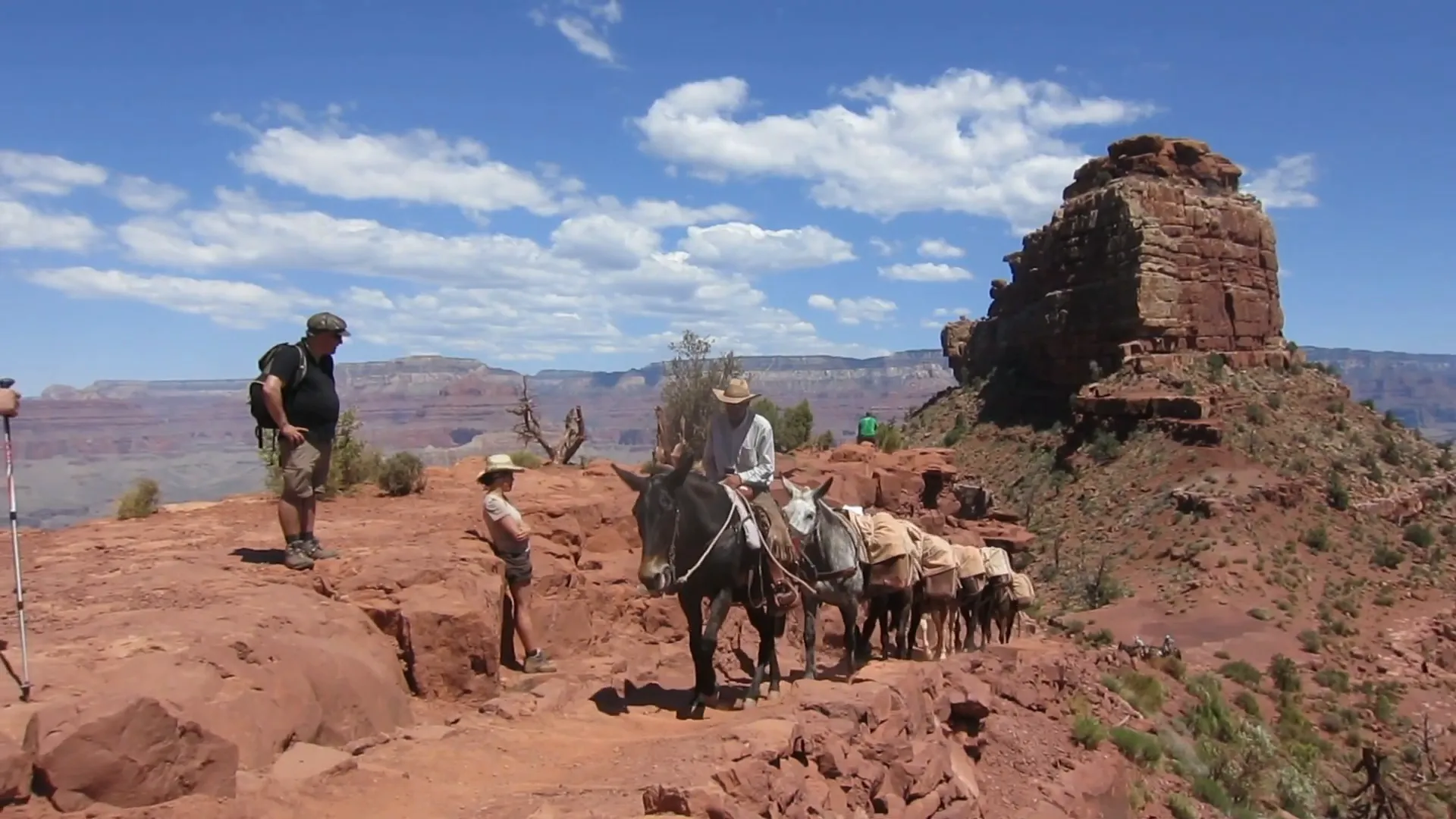
Safety Tips: Managing Heights, Edges, and Heat
Many hikers worry about the canyon’s edges, but the main corridor trails like Bright Angel and South Kaibab are well-maintained, about four feet wide, and have no dangerous drop-offs along the walking path. Staying on the inside edge of the trail helps those with a fear of heights feel more secure.
More primitive trails like Grandview and Hermit do have edges and require more caution. However, accidents on trails are rare; most falls happen near visitor centers or overlooks when people get too close for selfies.
Heat is a more common hazard, especially in summer. Heat exhaustion and heat stroke can be serious, so drink frequently, rest in shaded areas, and cool down by pouring water on your hat or clothes when possible. Listen to your body, and don’t push beyond your limits.
Many hikers underestimate the difficulty of the climb out, carrying insufficient water or supplies. This not only risks personal health but can endanger rescue personnel. It’s better to start with shorter hikes and build experience than to attempt overly ambitious routes unprepared.
Additional Resources and Links for Your Grand Canyon Adventure
For those interested in exploring beyond the Grand Canyon, Southern Utah offers an abundance of spectacular parks and experiences. Visitors staying at Stay Copper Rock can easily access nearby destinations such as Zion National Park, Bryce Canyon, and Arches National Park.
Explore related travel guides and hiking tips to complement your Grand Canyon trip:
Frequently Asked Questions About Day Hiking in the Grand Canyon
Is the North Rim worth visiting for day hikes?
The North Rim offers a quieter, more remote experience but is closed during winter months due to heavy snow. For most visitors, especially beginners, the South Rim is more accessible and provides a wider range of day hiking options.
Can I hike to the bottom of the Grand Canyon in a day?
Hiking to the bottom and back in one day is extremely challenging and not recommended for most hikers. The climb out is strenuous and time-consuming. A better approach is to hike partway down and return before exhaustion sets in.
Are there water sources on all trails?
No. Bright Angel Trail has water available at intervals, but South Kaibab and many other trails do not. Always carry enough water for your entire hike and check the park’s water status online before heading out.
When is the best time to start a hike?
Early morning, ideally before sunrise, is the best time to start. This helps avoid crowds, mule traffic, and the midday heat, making your hike safer and more enjoyable.
What gear is essential for a day hike in the Grand Canyon?
Bring plenty of water (3 liters or more), sun protection, sturdy shoes, trekking poles for stability, and snacks that are easy to digest. Renting gear like trekking poles is possible at Grand Canyon Village if you prefer to travel light.
Conclusion: Embrace the Grand Canyon Adventure with Confidence
Day hiking in the Grand Canyon is a rewarding experience that offers stunning views, unique geological features, and a chance to connect deeply with nature’s grandeur. By understanding the park’s layout, choosing suitable trails, preparing for variable weather, and packing the right gear, hikers can enjoy a safe and memorable adventure.
For visitors staying in Southern Utah, combining Grand Canyon day hikes with nearby parks like Zion and Bryce Canyon creates an unforgettable vacation filled with diverse landscapes and outdoor activities. Accommodations such as those offered by Stay Copper Rock provide the perfect home base for exploring these wonders with comfort and convenience.
Remember to start small, respect your limits, and soak in every moment of the canyon’s breathtaking beauty. With proper planning and preparation, your Grand Canyon day hike will be a highlight of your travel journey for years to come.

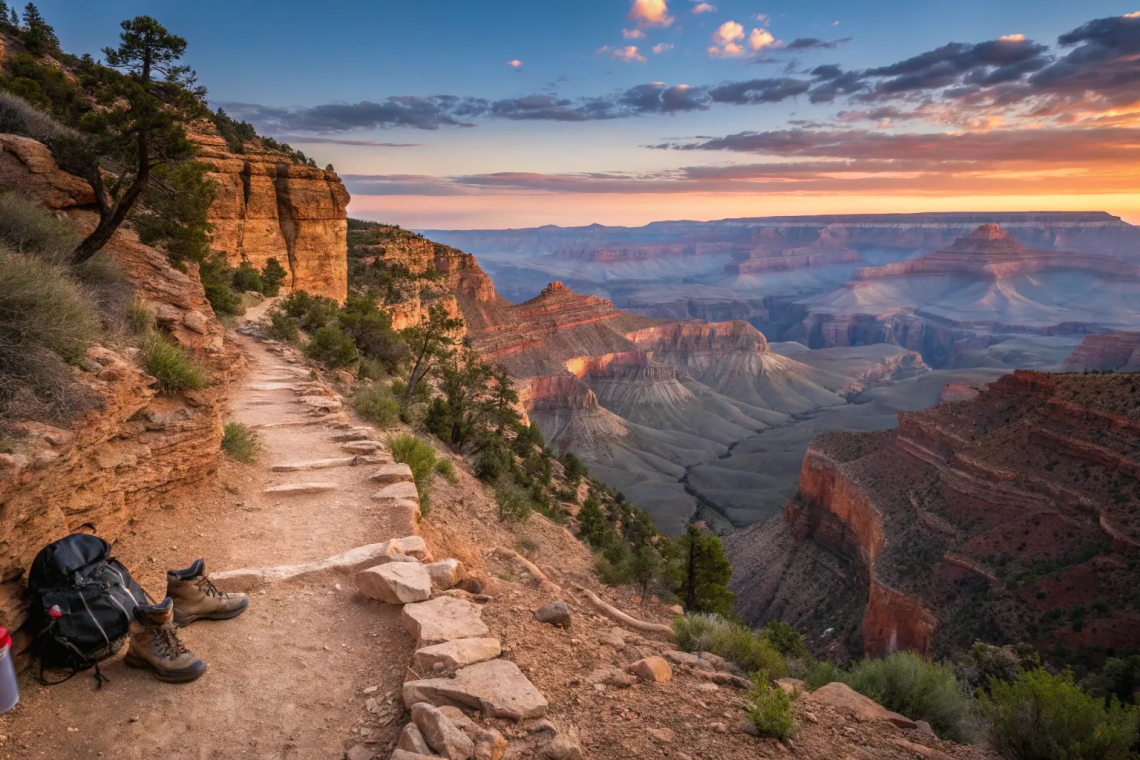




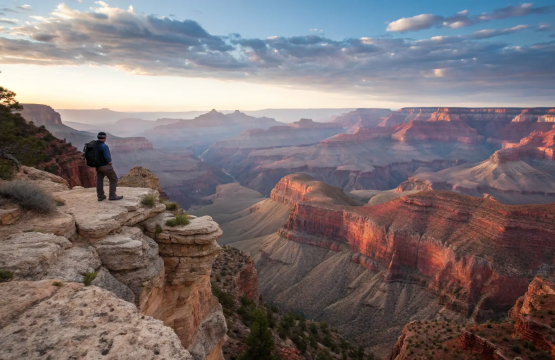
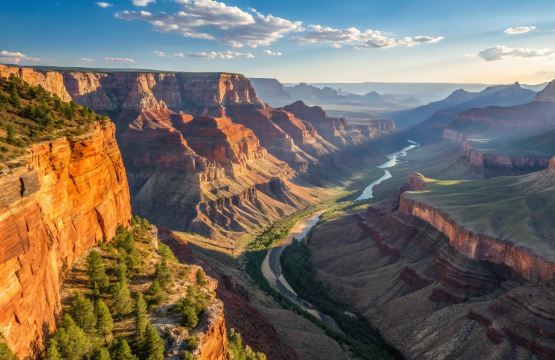
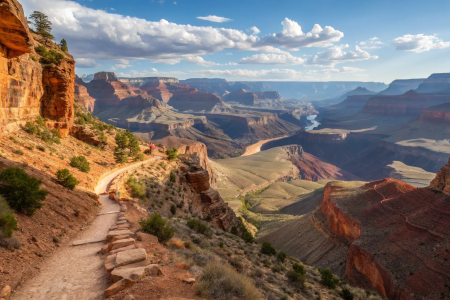
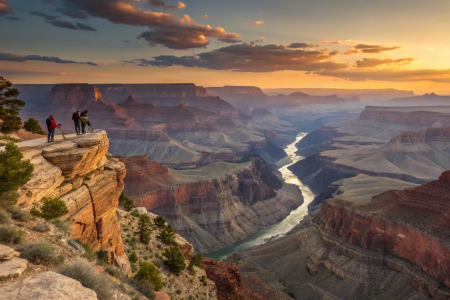
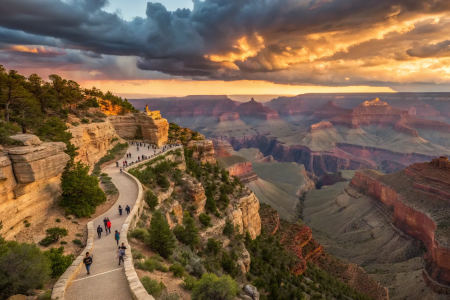

Join The Discussion